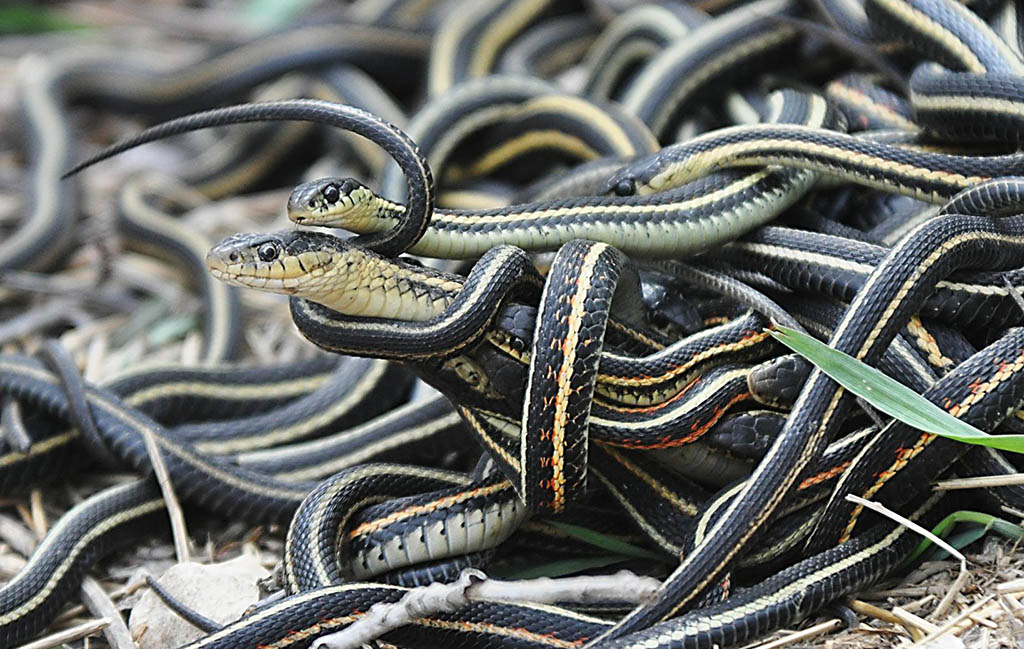If you are terrified of snakes or don’t have a lot of friends yourself then this might be disappointing news. Scientists have discovered that snakes—or more specifically, garter snakes—have a tendency to form strong friendships with their fellow slithering brethren.
A study published in the Behavioral Ecology and Sociology academic journal tested 40 garter snakes, dividing them into groups of 10 and placing each group in a walled enclosure. To help identify the snakes, each serpent was marked with a uniquely colored dot on its head. Twice a day the snakes would be taken out of the tanks while the tanks were cleaned.
The results were quite interesting.
Researching interaction in snakes
The study was conducted by comparative psychologist Noam Miller and his graduate student Morgan Skinner. While the pair have tested many species of animals to see how they behave in groups, Skinner wanted to try the test with garter snakes, because so little research has been done on this type of interaction in snakes. With this in mind, he obtained the 40 serpents for the study, selecting Thamnophis sirtalis sirtalis specimens—more commonly known as eastern garter snakes. They are a common variety of serpent found in North and Central America.
So how did they behave?
Testing each snake’s personality
The snakes began forming cliques. When placed inside the tanks in mixed locations, the snakes would quickly find the other snakes with whom they had previously associated without fail, often coiling up together. Don’t mistake this slinky cuddling as some form of affection: this is not mating, as snakes of the same gender also demonstrated this behavior.
Read more: Star Nosed Mole: The Fastest Forager in the World
As snakes are cold-blooded, they might have just been keeping warm. What came next, however, was rather interesting. Miller and Skinner observed that the cliques the snakes formed seemed to have an effect on their personalities.
Some snakes were shy, while others were bolder. Their personalities were identified by adding a door to each enclosure where the garter snakes could slither out of if they wanted. Some snakes immediately “went abroad,” whereas others preferred to stay behind in relative safety.
What’s interesting, though, is that their group behavior was different.
Read more: Dave the Worm Executed after Smashing World Record
With a larger group, snakes that were previously bold or shy suddenly began behaving in a uniform fashion, as if they were shedding their individual personalities for more of a “group-mind” mentality.
Yikes!
Notably, the larger the group of snakes in a tank, the less likely that one snake would “break off” from the group to explore. More research will be required, of course, to further evaluate this “groupthink” and gain a better understanding of the socialization of snakes. In the meantime let us hope that cobras, unlike garter snakes, are not as social.
Otherwise, we could be in trouble.


